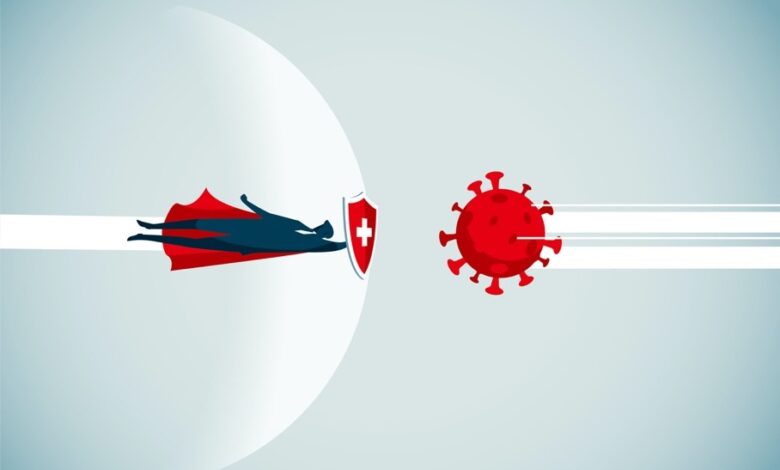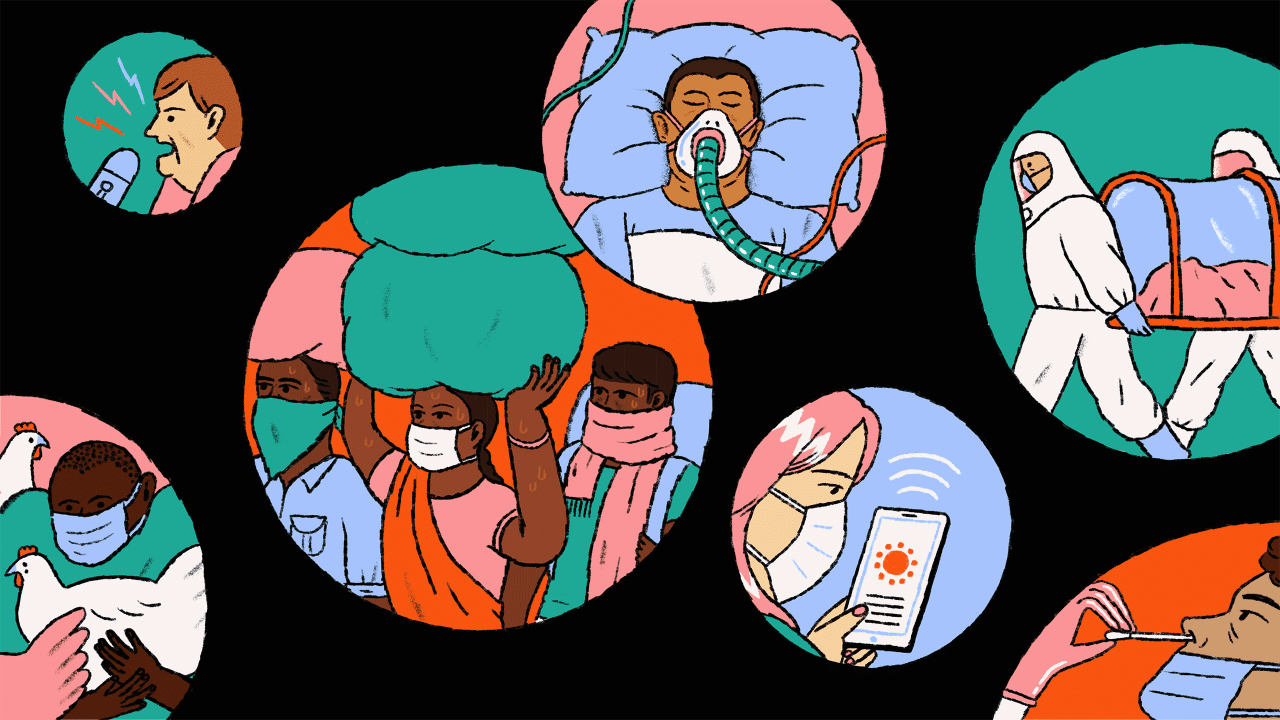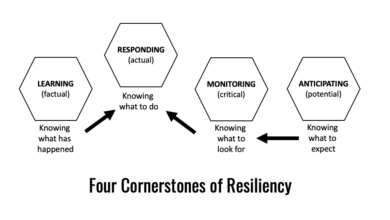
Ethical Leadership During Coronavirus Crisis
Ethical leadership during coronavirus crisis is crucial. This crisis forced leaders to navigate unprecedented challenges, demanding strong ethical frameworks and decisive actions. We’ll delve into the critical aspects of ethical leadership during this period, from defining its essence to examining the long-term implications.
The pandemic exposed both successful and unsuccessful responses from leaders across the globe. We’ll analyze the key decision-making processes, communication strategies, and considerations for employee well-being. The ethical implications of resource allocation and the impact on vulnerable populations will also be examined.
Defining Ethical Leadership in a Crisis
Navigating crises like the COVID-19 pandemic demands a new level of leadership. Ethical leadership, in these times, transcends mere management; it becomes a moral compass, guiding actions and decisions through uncertainty and hardship. It’s not just about achieving goals, but about doing so with integrity, compassion, and a deep understanding of the human cost. Effective leadership during a crisis must prioritize the well-being of all stakeholders, from employees and customers to the wider community.Ethical leadership, during a crisis, is distinguished by a commitment to principles that prioritize fairness, transparency, and accountability.
It goes beyond the usual expectations of leadership, demanding an extra layer of moral responsibility and a deep understanding of the complex ethical dilemmas that emerge.
Key Principles of Ethical Leadership in Crises
Ethical leadership in a crisis is not a theoretical concept but a practical necessity. Its core principles form the bedrock of effective responses. These principles underpin the decision-making processes of leaders, shaping their actions and influencing their outcomes. These principles are vital for building trust and fostering resilience within the affected communities.
- Integrity: Ethical leaders maintain honesty and transparency in all their actions. They act consistently with their values and beliefs, even under pressure. This includes being truthful in communications, adhering to promises, and holding themselves accountable for their decisions. For example, during the pandemic, leaders who prioritized accurate and timely information, even when it was difficult, displayed integrity.
- Compassion: Ethical leaders recognize the human cost of a crisis and prioritize the well-being of those affected. They demonstrate empathy and concern for the needs of their employees, customers, and the wider community. During the COVID-19 crisis, compassionate leaders prioritized the health and safety of their staff while adapting to remote work policies.
- Accountability: Ethical leaders take responsibility for their decisions and actions, both successes and failures. They acknowledge mistakes and learn from them. This builds trust and fosters a culture of responsibility within their organizations. For instance, a company admitting its shortcomings in a crisis response and implementing corrective measures displays accountability.
- Transparency: Ethical leaders are open and honest in their communication. They share information with stakeholders in a clear and understandable manner. This fosters trust and allows for collective problem-solving. Open communication about the pandemic’s impact on a company’s operations, including challenges and solutions, is an example of transparency.
Moral and Ethical Considerations
Responding to a crisis like the coronavirus pandemic requires careful consideration of various moral and ethical dimensions. These considerations are crucial for navigating the complexities of the situation and ensuring a just and equitable response.
- Prioritizing Vulnerable Populations: Ethical leaders must prioritize the needs of vulnerable populations, ensuring that they have access to resources and support. This includes marginalized communities, those with pre-existing health conditions, and those facing economic hardship. In the pandemic, providing essential services and resources to vulnerable groups became a critical moral obligation.
- Fairness and Equity: Ethical leaders must strive to ensure that the crisis response is fair and equitable for all stakeholders. This involves addressing potential biases and ensuring that all groups are treated with dignity and respect. Ensuring fair distribution of resources and support, regardless of background, is crucial for equitable crisis response.
- Balancing Individual Needs with Collective Responsibility: Leaders must balance the individual needs of those affected by the crisis with the collective responsibility of protecting the wider community. This requires careful consideration of the potential trade-offs and the overall impact of decisions. Finding a balance between individual liberties and collective health during the pandemic was a complex ethical challenge.
Transparency and Accountability in Crisis Leadership
Transparency and accountability are essential elements of ethical leadership during crises. They build trust and allow for a collaborative response. The pandemic highlighted the critical role of transparency and accountability in crisis leadership.
- Open Communication: Leaders must be transparent in their communication with stakeholders. This involves sharing information about the crisis, its impact, and the actions being taken to address it. Honest and timely communication with employees, customers, and the public is critical.
- Accountability Mechanisms: Leaders must establish clear accountability mechanisms to ensure that all actions are transparent and in line with ethical principles. This includes clear lines of communication and a system for reporting concerns.
Decision-Making Processes Under Pressure: Ethical Leadership During Coronavirus Crisis

Navigating crises like the COVID-19 pandemic necessitates swift and ethical decision-making. Leaders faced unprecedented challenges, requiring them to balance public health concerns with economic realities, individual liberties, and societal well-being. This demanded a robust framework for ethical decision-making that went beyond simple procedures and incorporated nuanced considerations. This discussion will explore the critical steps involved, compare different models, and examine the dilemmas encountered.Effective crisis leadership hinges on a structured approach to decision-making.
Leaders need to adopt a systematic process, allowing for careful consideration of diverse viewpoints and potential consequences. This approach is not just a theoretical exercise; it’s a practical necessity in times of uncertainty.
Ethical Decision-Making Steps Under Pressure
A robust ethical decision-making framework during a crisis should include several critical steps. These steps must be adaptable to the evolving nature of the crisis and its impact. Prioritizing clear communication, transparency, and accountability is essential for building trust and fostering cooperation among stakeholders.
- Assessment of the Situation: A comprehensive understanding of the crisis’s scope, impact, and potential consequences is paramount. This involves gathering data, analyzing trends, and identifying key stakeholders. Leaders must accurately assess the situation, considering all available evidence, including scientific data, expert opinions, and community input. This phase is critical for establishing a foundation for informed decisions.
- Identification of Stakeholders and their Interests: Recognizing and understanding the diverse perspectives of all affected stakeholders is crucial. This includes patients, healthcare workers, businesses, governments, and the public. Acknowledging the potential conflicts between these interests is vital for navigating the complexities of the crisis effectively.
- Formulation of Potential Courses of Action: Developing multiple alternative courses of action is essential, taking into account the potential benefits and risks of each. This involves anticipating potential consequences and evaluating their ethical implications.
- Ethical Evaluation of Options: Each course of action must be rigorously evaluated based on ethical principles, including justice, beneficence, non-maleficence, and respect for persons. This process should incorporate the values and principles of the organization and the community.
- Decision Making and Implementation: Selecting the course of action that best aligns with ethical principles and addresses the crisis’s most pressing needs is paramount. The decision should be transparent and communicated effectively to all stakeholders. Effective implementation requires a clear plan and robust communication.
- Evaluation and Reflection: Assessing the effectiveness of the chosen course of action is critical. This includes monitoring the impact on various stakeholders, identifying lessons learned, and adapting the response as needed.
Comparison of Ethical Decision-Making Models, Ethical leadership during coronavirus crisis
Different ethical decision-making models offer varying frameworks for navigating crises. Understanding these models allows leaders to choose the most suitable approach for a given situation.
- Utilitarianism: This model emphasizes maximizing overall well-being and minimizing harm. A utilitarian approach during a crisis may prioritize the collective good, even if it means some individuals face hardship. However, it must be applied cautiously, as it can potentially overlook the rights of minority groups or vulnerable populations.
- Deontology: This model focuses on adherence to moral duties and principles. A deontological approach during a crisis might prioritize individual rights and freedoms, even if it leads to less efficient outcomes. Leaders must carefully balance the importance of individual rights with the need to address the collective impact of the crisis.
- Virtue Ethics: This model centers on the character and moral virtues of the decision-maker. A virtue ethics approach during a crisis emphasizes the importance of fairness, compassion, and courage in decision-making. This approach encourages leaders to act in accordance with their values and commitments.
Ethical Dilemmas and Mitigation Strategies
The COVID-19 pandemic presented numerous ethical dilemmas. Balancing public health measures with economic considerations, ensuring equitable access to resources, and respecting individual liberties were among the significant challenges.
- Balancing Public Health with Economic Needs: Lockdowns and restrictions had a significant economic impact. Ethical leaders had to weigh the public health benefits against the economic costs and consider measures to mitigate the economic hardship. One approach is to implement targeted support programs and relief measures to aid businesses and individuals affected by the crisis.
- Ensuring Equitable Access to Resources: The pandemic highlighted existing disparities in access to healthcare and resources. Leaders needed to ensure that essential resources were distributed fairly, recognizing the needs of marginalized communities.
- Respecting Individual Liberties: Restrictions on movement and activities raised concerns about individual liberties. Ethical leaders needed to balance public health with individual freedoms, using transparent and justifiable measures to limit restrictions when possible.
Communication and Transparency in Crisis
Navigating a crisis like the COVID-19 pandemic demands exceptional communication skills from leaders. Effective communication fosters trust, reduces anxiety, and empowers individuals to take necessary precautions. Transparency is crucial in this context, as it allows for informed decision-making and strengthens the public’s confidence in the response. Leaders must be mindful of the ethical implications of their messaging and ensure that their actions align with their words.Effective communication during a crisis involves more than just disseminating information.
It requires empathy, clarity, and a genuine understanding of the anxieties and concerns of the public. Leaders must tailor their messaging to various audiences and adapt their communication style to the evolving situation. Ethical considerations should guide every aspect of this process, from the selection of channels to the tone and language used.
Effective Communication Strategies
Clear, concise, and consistent messaging is paramount. Leaders should avoid ambiguity and provide specific instructions. Utilizing multiple communication channels, such as social media, press conferences, and official websites, ensures broader reach and accessibility. Regular updates are essential to maintain public awareness and address emerging concerns.
Examples of Effective and Ineffective Communication
During the pandemic, some leaders effectively communicated the evolving situation, while others struggled. Leaders who presented clear, concise information, acknowledged uncertainties, and prioritized public health often garnered public trust. Conversely, leaders who offered conflicting messages, downplayed the severity of the situation, or lacked transparency risked eroding public confidence.Effective communication during the pandemic involved acknowledging uncertainties and highlighting the collaborative nature of the response.
For instance, leaders who openly discussed the evolving nature of the virus and the challenges in predicting its spread fostered a sense of shared responsibility.
Importance of Transparency
Transparency is vital in building trust and confidence during a crisis. Openly sharing data, acknowledging shortcomings, and engaging in dialogue with the public fosters a sense of shared understanding. Transparency builds trust and allows for the public to participate in the decision-making process. This is not just about presenting data, but also about being honest about the limitations and uncertainties.
Comparison of Communication Styles
| Communication Style | Description | Ethical Implications |
|---|---|---|
| Authoritarian | Top-down communication, limited feedback | May stifle dissent and create distrust, especially when the crisis demands a collaborative approach. |
| Participatory | Encourages dialogue and feedback, fosters a sense of ownership | Promotes trust and empowerment, allowing for a more effective and ethical response. |
| Transparent | Openly shares information, acknowledges limitations | Builds trust and confidence by allowing for informed decision-making, fosters collaboration. |
| Reactive | Responds to events as they occur | May appear disorganized and lack a proactive approach, possibly hindering effective crisis management. |
Employee Well-being and Ethical Treatment
Navigating a crisis like the coronavirus pandemic requires leaders to prioritize not only organizational success but also the well-being and ethical treatment of their employees. A supportive and inclusive environment fosters resilience, productivity, and ultimately, a stronger organization capable of weathering any storm. This focus on employee well-being is not just a compassionate act, but a strategic imperative.A leader’s ethical response to a crisis directly impacts employee morale and trust.
This crucial connection between ethical leadership and employee well-being is often overlooked, but it is paramount to organizational success. A compassionate and responsible approach to employee care, in addition to sound decision-making, can create a robust, adaptable workforce.
Prioritizing Employee Well-being
Prioritizing employee well-being during a crisis is essential for maintaining a productive and engaged workforce. This includes recognizing the emotional toll the crisis can take on individuals, providing access to resources, and fostering a sense of community and support. Leaders should proactively address the potential impacts of stress, anxiety, and isolation on employees. Recognizing the individual circumstances and needs of employees is crucial.
Creating a Supportive and Inclusive Environment
A supportive and inclusive environment is critical for fostering employee well-being and ethical treatment. This involves actively encouraging open communication, actively listening to employee concerns, and ensuring all voices are heard and valued. Leaders must ensure inclusivity extends to all demographics and employee backgrounds, fostering an environment where every employee feels safe, respected, and valued.
Open Communication Channels
Establishing and maintaining open communication channels is vital for actively addressing employee concerns. Leaders must create opportunities for two-way communication, allowing employees to voice their anxieties and concerns. Transparent communication about the organization’s response to the crisis and the rationale behind decisions is paramount. Active listening and empathetic responses to employee feedback are essential elements of this approach.
Strategies for Maintaining Employee Morale and Productivity
Implementing strategies that support employee morale and productivity during a crisis is crucial. These strategies should address both the immediate needs and long-term well-being of the workforce. Maintaining a healthy work-life balance is critical during this time, as is providing resources for stress management and mental well-being.
| Strategy | Ethical Consideration | Implementation |
|---|---|---|
| Flexible Work Arrangements | Respecting work-life balance, acknowledging diverse needs. | Offer flexible work schedules, remote work options, and compressed workweeks. Provide necessary technology and training for remote work. |
| Employee Assistance Programs (EAPs) | Providing support for mental and emotional well-being. | Ensure employees have access to EAPs and mental health resources. Promote the availability of these resources through company communication. |
| Regular Check-ins and Feedback Sessions | Demonstrating care and concern, addressing concerns promptly. | Schedule regular one-on-one meetings with employees to address concerns, provide updates, and offer support. Establish dedicated channels for feedback. |
| Recognition and Appreciation | Acknowledging employee contributions and efforts. | Publicly acknowledge and reward employees for their hard work and resilience. Recognize both individual and team accomplishments. |
| Training and Development | Equipping employees with skills for the changing environment. | Provide training and development opportunities to enhance employee skills and adapt to evolving needs. |
Ethical Considerations in Resource Allocation
The coronavirus pandemic exposed the fragility of global systems and highlighted the critical need for ethical resource allocation. Scarce medical supplies, ventilators, and personal protective equipment (PPE) became highly contested, forcing difficult decisions about who received priority access. This necessitated a careful examination of fairness, equity, and justice in the distribution of resources, which are crucial elements of ethical leadership during crises.
Ethical Principles in Crisis Resource Allocation
Ethical resource allocation during a crisis must adhere to principles of fairness, equity, and justice. Fairness implies impartiality and equal treatment for all individuals, regardless of their background or social status. Equity recognizes that different individuals and groups may have varying needs and requires tailored approaches to address those disparities. Justice demands that the allocation process is transparent, accountable, and aligns with societal values and legal frameworks.
These principles are essential for maintaining public trust and ensuring the crisis response is morally sound.
Examples of Resource Allocation During the Pandemic
The pandemic saw various examples of resource allocation, some demonstrating ethical considerations, while others raised serious ethical concerns. For instance, some countries prioritized healthcare workers, particularly those in high-risk areas, when distributing PPE. This approach, while prioritizing essential personnel, could be seen as ethically problematic if it led to shortages for other critical personnel or the general public. Another example involved the allocation of ventilators.
In some regions, strict criteria were employed, based on patient prognosis and likelihood of recovery, while other regions prioritized those who had been infected for longer durations. The criteria used for ventilator allocation had significant ethical implications, influencing public perception of the crisis response.
Ethical Dilemmas in Resource Allocation Scenarios
The following table illustrates various scenarios of resource allocation during the pandemic, highlighting the ethical dilemmas and trade-offs involved. It underscores the complex nature of these decisions and the need for careful consideration of diverse perspectives and societal values.
| Scenario | Ethical Dilemma | Potential Trade-offs | Ethical Considerations |
|---|---|---|---|
| Limited ventilators available | Prioritizing patients based on age, pre-existing conditions, or likelihood of recovery. | Risk of disadvantaging younger, healthier patients, potentially leading to resentment. | Transparency in criteria used for allocation, consideration of the impact on different patient groups. |
| Shortage of ICU beds | Determining who gets admitted to the ICU based on severity of illness, likelihood of survival, or social factors. | Possibility of overlooking patients with a chance of recovery or those with high social value, potentially leading to accusations of discrimination. | Clear and publicly available criteria for admission, equal access to care based on medical need, transparency about resource limitations. |
| Scarce PPE for healthcare workers | Prioritizing front-line healthcare workers or prioritizing those in high-risk areas | Risk of shortages for other critical personnel or the general public. | Robust assessment of risk levels for different healthcare workers, prioritization based on the highest risk to the individual and the population. |
Impact on Vulnerable Populations

The COVID-19 pandemic exposed and exacerbated existing inequalities, disproportionately impacting vulnerable populations. These groups, often facing systemic disadvantages, experienced higher rates of infection, severe illness, and economic hardship. Understanding these challenges is crucial for ethical leadership during and after crises. Ethical leaders must prioritize the needs of these groups and strive to create a more equitable recovery.
Ethical Challenges Faced by Vulnerable Populations
Vulnerable populations, including low-income individuals, minorities, the elderly, individuals with pre-existing health conditions, and those in marginalized communities, faced unique challenges during the pandemic. Access to healthcare, essential resources, and information was often limited, leading to increased vulnerability. These disparities in access compounded existing inequalities, creating a vicious cycle of disadvantage. Discrimination and stigma were also significant factors, further isolating and marginalizing these groups.
Addressing the Needs of Marginalized Groups
Ethical leaders must prioritize proactive strategies to mitigate the disproportionate impact of crises on vulnerable populations. This requires a deep understanding of the specific needs and challenges faced by these groups. Effective communication channels tailored to their specific circumstances are essential. Providing culturally sensitive support and resources, ensuring access to reliable information, and actively combating misinformation are crucial steps.
Prioritizing fair and equitable resource allocation, especially healthcare resources, is also critical.
Examples of Effective and Ineffective Responses
Some countries and organizations demonstrated effective leadership by prioritizing the needs of vulnerable populations. This involved targeted interventions, increased funding for social programs, and expanded access to healthcare. Conversely, other responses failed to address the specific needs of these groups, resulting in further marginalization and widening disparities. A lack of culturally sensitive communication and insufficient resource allocation for vulnerable populations often characterized these ineffective responses.
Strategies to Mitigate the Disproportionate Impact
| Challenge | Mitigation Strategy | Example |
|---|---|---|
| Limited Access to Healthcare | Establish mobile health clinics in underserved areas, translate healthcare materials into multiple languages, and provide transportation assistance. | Many countries established mobile vaccination units in remote and low-income communities to increase accessibility. |
| Economic Hardship | Implement targeted financial assistance programs, provide unemployment benefits, and support small businesses in marginalized communities. | Some governments increased unemployment benefits and provided small business loans specifically to minority-owned businesses. |
| Discrimination and Stigma | Conduct public awareness campaigns to combat misinformation and stigma, and create safe spaces for marginalized communities to share their experiences and concerns. | Public health campaigns highlighting the importance of testing and vaccination, regardless of background, are examples of combating stigma. |
| Limited Access to Information | Develop culturally appropriate communication strategies, provide access to reliable information in multiple languages, and leverage trusted community leaders to disseminate information. | Community health workers in various languages played a key role in disseminating accurate information during the pandemic. |
Ethical Leadership in Crisis Management

Navigating crises effectively requires more than just strong planning and execution. It demands ethical leadership, which sets the tone and fosters trust during challenging times. Ethical leaders prioritize the well-being of all stakeholders, even when facing immense pressure and uncertainty. This involves consistently upholding values, making transparent decisions, and fostering a culture of responsibility.Ethical leadership is not a passive role during a crisis.
It is the active, conscious effort to guide organizations and individuals through a complex situation while maintaining integrity and fairness. This proactive approach helps to mitigate damage, restore confidence, and build resilience for the future.
The Role of Ethical Leadership in Crisis Management Strategies
Ethical leadership significantly influences crisis management strategies by establishing a clear framework for decision-making. It ensures that responses are not only effective but also aligned with moral principles and values. This framework promotes accountability, transparency, and trust among stakeholders, including employees, customers, and the public.
Principles of Ethical Leadership in Developing and Implementing Crisis Response Plans
Developing and implementing crisis response plans requires adhering to core ethical principles. These principles include fairness, transparency, accountability, and respect for human dignity. A commitment to these principles ensures that the response plan addresses the needs of all affected parties, particularly vulnerable populations. For example, ensuring equitable access to resources during a natural disaster is crucial. Ethical leaders prioritize the welfare of their employees, customers, and the community.
Examples of Ethical Leadership Principles Influencing Crisis Management Strategies
Several examples demonstrate the impact of ethical leadership in crisis management. During the COVID-19 pandemic, many organizations prioritized the health and safety of their employees, demonstrating a commitment to their well-being. These actions, though challenging, fostered trust and strengthened the organization’s reputation. A clear example is the prioritization of personal protective equipment (PPE) for healthcare workers and frontline staff.
Similarly, ethical leaders demonstrated transparency in communicating with stakeholders about the evolving situation, keeping them informed and addressing concerns.
Methods for Assessing the Ethical Impact of Crisis Response Measures
Evaluating the ethical impact of crisis response measures is crucial. One method involves considering the potential consequences of decisions on various stakeholder groups. A framework could include assessing the fairness and equity of resource allocation, the impact on vulnerable populations, and the transparency of communication. For instance, a crisis response plan should be evaluated against principles of fairness and equity, considering how it will impact marginalized groups.
Ethical leaders should actively seek feedback from stakeholders and make adjustments to their responses based on these insights. Another method involves using ethical frameworks, such as utilitarianism or deontology, to guide decision-making. By using such frameworks, leaders can assess the potential benefits and harms of different courses of action.
Long-Term Ethical Implications of the Crisis
The COVID-19 pandemic presented unprecedented challenges, forcing leaders to confront ethical dilemmas on a scale never before seen. This crisis exposed existing vulnerabilities and highlighted the critical importance of ethical decision-making in times of crisis. The long-term implications extend beyond immediate responses, influencing future leadership approaches and organizational structures.The pandemic’s impact reverberates through various aspects of organizational life, impacting employee well-being, resource allocation, and stakeholder relationships.
Leaders who prioritized ethical considerations during this period demonstrated a profound understanding of the crisis’s complex nature and its potential to reshape the future of leadership.
Lessons Learned About Ethical Leadership
The pandemic served as a crucible, testing the ethical fortitude of leaders across sectors. Crucial lessons emerged about the need for transparency, empathy, and adaptability in times of crisis. Leaders who effectively communicated uncertainty and demonstrated compassion built trust and fostered resilience within their organizations.
- Transparency and communication were paramount. Open and honest communication about risks and challenges helped maintain employee morale and trust. Leaders who prioritized transparency fostered a sense of shared understanding and responsibility.
- Empathy and compassion were essential for navigating the crisis. Recognizing the emotional toll of the pandemic on employees, and supporting their well-being, was crucial. Leaders who demonstrated empathy built stronger relationships and fostered a more supportive work environment.
- Adaptability and resilience were vital for long-term success. The pandemic required leaders to rapidly adjust strategies and processes, demonstrating a commitment to ongoing adaptation and resilience.
Impact on Long-Term Ethical Leadership Approaches
The pandemic significantly impacted long-term ethical leadership approaches, prompting a reevaluation of existing strategies and policies. Organizations now place a greater emphasis on proactive measures to mitigate future crises.
- Prioritization of employee well-being. The pandemic highlighted the importance of employee well-being, leading to a shift in focus towards providing comprehensive support systems. This includes flexible work arrangements, mental health resources, and robust communication strategies.
- Enhanced crisis preparedness. Organizations have realized the need for comprehensive crisis preparedness plans, including contingency plans for diverse scenarios and regular training programs. This proactive approach minimizes potential disruptions and allows organizations to respond more effectively.
- Increased focus on social responsibility. The pandemic underscored the interconnectedness of global issues, prompting a greater emphasis on social responsibility. Leaders now recognize the importance of addressing social and environmental concerns in their decision-making processes.
Comparison of Ethical Leadership Before and After the Crisis
| Aspect | Ethical Leadership Before the Crisis | Ethical Leadership After the Crisis |
|---|---|---|
| Communication | Often reactive and focused on short-term objectives. | Proactive and transparent, emphasizing open dialogue and shared understanding. |
| Employee Well-being | Often treated as a secondary concern. | Prioritized as a critical component of organizational success. |
| Crisis Preparedness | Limited or reactive approaches to crisis management. | Proactive and comprehensive plans for diverse scenarios, encompassing potential disruptions. |
| Social Responsibility | Often viewed as a separate aspect of business. | Integrated into core business strategy, emphasizing ethical considerations and sustainability. |
Epilogue
In conclusion, ethical leadership during the coronavirus crisis highlighted the importance of transparency, accountability, and empathy in navigating complex situations. The crisis forced leaders to adapt their strategies and prioritize the well-being of their employees and communities. By examining the lessons learned, we can equip future leaders with the tools to navigate similar crises with integrity and compassion.





